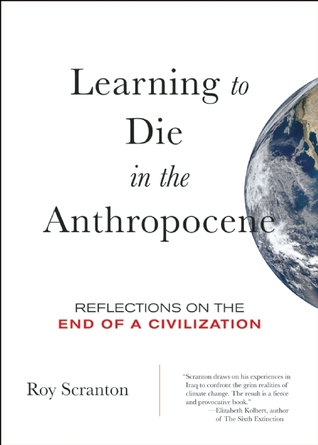
Ratargul Swamp Forest, Sylhet Bangladesh. Photo by DM Rehem.
The more I meditate, the less I like to drive.
I’ll let that sentence stand for a moment, though I’m not yet ready to vouch for its accuracy. The causal connection is iffy, for one thing. I’m also stumbling a little on the terminology. Meditation is meant to ground one in the present. Yet “the present” is precisely where one wants to be when accelerating from a ramp onto a high-speed freeway, when even a lapse of a few seconds’ attention can result in a spectacular wreckage. I might put it this way: accelerating from a ramp to a high speed freeway is an embodiment of the cognitive restlessness that meditation aims to corral. Meditation may be making it obvious to me how unhealthy driving really is.
What’s the difference, I’ve lately wondered, between meditation and my time in books, my work, my scholarship? Both are exercises in focus. Both activities seem out of sync with time – if not in the sense of time as “the present,” then of time as the general current or flow. Meditation has been adopted by corporate culture as a practice that will lead to increased productivity. If that means more ticks on the slate of the Gross National Product, my hope is the opposite is the case. The 2007 collapse of the economy was good for the climate, it turns out. Fewer particles of carbon were released into the atmosphere than would have been otherwise. On the individual level, meditation and scholarship interrupt the flow. That can’t hurt, it seems to me.
In his long essay, Learning to Die in the Anthropocene (City Lights Books, 2015), Roy Scranton speaks of “the continuous press of the present” and the necessity of suspending it through a practice of interruption. As in any literature about the climate crisis, there is much to be gloomy about here. Our problems are large and wicked. In his first three chapters, Scranton surveys the various environmental catastrophes we  face, information familiar to anyone who can stand to take it in. Still, as he discusses the “disciplined interruption of social flows, the detachment of consciousness from impulse” as a “radical practice,” I begin to feel somewhat cheered. “We must inculcate ruminative frequencies in the human animal,” Scranton writes, “by teaching slowness, attention to detail, argumentative rigor, careful reading, and meditative reflection.” These are different ways to describe what he calls “philosophical humanism,” and which I understand as instruction and scholarly practice in the humanities. It’s a relief to be informed that what one must do to combat climate change is what one most enjoys doing and would likely be doing, anyway.
face, information familiar to anyone who can stand to take it in. Still, as he discusses the “disciplined interruption of social flows, the detachment of consciousness from impulse” as a “radical practice,” I begin to feel somewhat cheered. “We must inculcate ruminative frequencies in the human animal,” Scranton writes, “by teaching slowness, attention to detail, argumentative rigor, careful reading, and meditative reflection.” These are different ways to describe what he calls “philosophical humanism,” and which I understand as instruction and scholarly practice in the humanities. It’s a relief to be informed that what one must do to combat climate change is what one most enjoys doing and would likely be doing, anyway.
To be clear, Scranton isn’t offering this as a solution to the climate crisis, only advice as to how to prepare for what will come of it. When one practices interruption, one “practices dying,” he contends. There’s a point here. As terrible as the threat of climate change is, it hasn’t altered the death sentence for any of us–or for that of our civilization. Scranton knows, having been a soldier in Iraq, what it is to face death, but again his advice on this score isn’t particular to the environmental crisis, but a more general momento mori. This interruptive cultivation of the past and its wisdom is the best way to learn how to die, as it would be no matter what was happening ecologically.
In other ways, as I read, I wondered about Scranton’s ecological bona fides. In several instances, his descriptions of reality harken back to a Cartesian-Newtonian perspective rather than partaking of an ecological or systemic view. “If, like a god,” Scranton writes, “we could see every photon’s arc and each neutrino’s wobble, we would see past and future laid out in a single mathematical design: infinite, determined, perfect.” This registers awareness of the new physics but not of Heisenberg’s uncertainly principle and not of later theories of self-organization and emergence. Thus everything that is, must be, and was “laid out already” in the Big Bang.
There is much in the essay, too, of the combative stance and hard line drawn between “human will and natural force” which I explored a bit in my last post: The Man Steve McQueen facing off against The System. Scranton’s practice of interruption seemed at times to be a case for a modernist redoubt where classicists sit isolated, working and re-working our “seed stock” of “remembrance,” while the current civilization races toward its end. This is a Fahrenheit 451 for the climate disaster.
However, as with the notion of “the present,” there are terminologies here running crossways with each other. In other of Scranton’s passages, the subject is very much inside the system, suffering the “stress-semantic chains of social excitation” that seek us as circuits to pass through, re-energized. Today’s digital world of device-driven interconnection facilitates this channeling. “We live in networks, webs, and hives, jacked in to remote-controlled devices and autonomous apps, moments of being in time, out of time,” Scranton writes. “No longer individual subjects or discrete objects, we have become vibrations, channelers, tweeters and followers.”
The Web is an easy target. We all know its restlessness, its excitations and angry escalations. Still, I respond to those passages where Scranton merges the cognitive and the material. The interrupter doesn’t disrupt, he says at one point, the interrupter “ponders.” When we suspend our tendency to vibrate and pass along, flow backs up, current swamps, as in a lowland woods. Of all the interrupters, each meditates alone. Yet even as I write that sentence something inside pushes back and brings this image to mind: a dozen persons across some public glade, practicing tai chi in slow, deliberate union.

2 Thoughts on this Post
S-USIH Comment Policy
We ask that those who participate in the discussions generated in the Comments section do so with the same decorum as they would in any other academic setting or context. Since the USIH bloggers write under our real names, we would prefer that our commenters also identify themselves by their real name. As our primary goal is to stimulate and engage in fruitful and productive discussion, ad hominem attacks (personal or professional), unnecessary insults, and/or mean-spiritedness have no place in the USIH Blog’s Comments section. Therefore, we reserve the right to remove any comments that contain any of the above and/or are not intended to further the discussion of the topic of the post. We welcome suggestions for corrections to any of our posts. As the official blog of the Society of US Intellectual History, we hope to foster a diverse community of scholars and readers who engage with one another in discussions of US intellectual history, broadly understood.
Anthony, Really enjoy your thoughts. It reminded me how I experience a familiarity between the work I do at my desk and the practice of meditation which I have done for years. Deep thought that takes into flow feels like a prayer of hope and is one of my favorite places to be. That same impulse turned medieval monks into those who kept the light of knowledge lit during dark times. I was reminded of this legacy when I wore my regalia and given a hood, a monk’s hood. That’s is the calling of the scholar to mediate on the world in hope and everything in it against the demands of the market. In our time the popular “mindfulness” movement has become another way to control time, to produce more, as you note, missing the whole point. So, yes, thinking that goes into scholarship can be a way to protest, to say no to the immediate, rushed and unrelenting production. But it does seem that more and more of what is called scholarship is produced as another commodity making us into knowledge machines, but machines are only capable of giving answers instead of offering questions. What is undervalued in our society is silence, reflection, and apparent inactivity (wasting time) may be what keeps the world alive until another renaissance. Your essay turned me into a bad poet. 🙂 Thank you.
Thank you for this comment, Lilian. Scranton references Greeks and Romans most. Then he draws on the modern period. Unless I missed it, there was nothing from the medieval era, and I wondered why. Your mention of monks keeping the light of knowledge during dark times would have supported that part of his argument well.